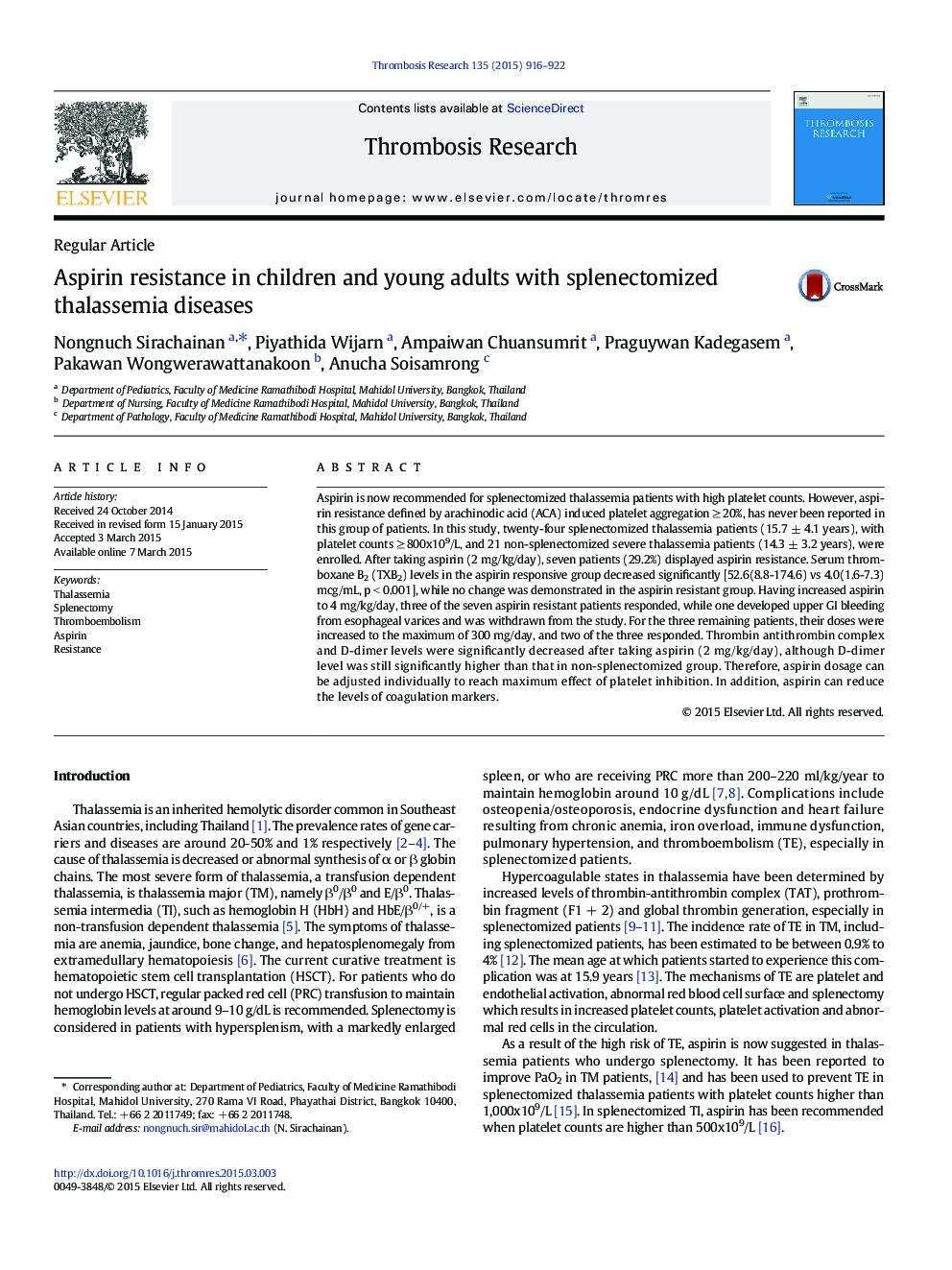| کد مقاله | کد نشریه | سال انتشار | مقاله انگلیسی | نسخه تمام متن |
|---|---|---|---|---|
| 6001589 | 1182953 | 2015 | 7 صفحه PDF | دانلود رایگان |
عنوان انگلیسی مقاله ISI
Aspirin resistance in children and young adults with splenectomized thalassemia diseases
ترجمه فارسی عنوان
مقاومت به آسپیرین در کودکان و نوجوانان مبتلا به بیماری های تالاسمی اسپلنکتومی شده
دانلود مقاله + سفارش ترجمه
دانلود مقاله ISI انگلیسی
رایگان برای ایرانیان
کلمات کلیدی
تالاسمی، اسپلنکتومی، ترومبوآمبولیسم، آسپرین مقاومت،
موضوعات مرتبط
علوم پزشکی و سلامت
پزشکی و دندانپزشکی
کاردیولوژی و پزشکی قلب و عروق
چکیده انگلیسی
Aspirin is now recommended for splenectomized thalassemia patients with high platelet counts. However, aspirin resistance defined by arachinodic acid (ACA) induced platelet aggregation â¥Â 20%, has never been reported in this group of patients. In this study, twenty-four splenectomized thalassemia patients (15.7 ± 4.1 years), with platelet counts â¥Â 800x109/L, and 21 non-splenectomized severe thalassemia patients (14.3 ± 3.2 years), were enrolled. After taking aspirin (2 mg/kg/day), seven patients (29.2%) displayed aspirin resistance. Serum thromboxane B2 (TXB2) levels in the aspirin responsive group decreased significantly [52.6(8.8-174.6) vs 4.0(1.6-7.3) mcg/mL, p < 0.001], while no change was demonstrated in the aspirin resistant group. Having increased aspirin to 4 mg/kg/day, three of the seven aspirin resistant patients responded, while one developed upper GI bleeding from esophageal varices and was withdrawn from the study. For the three remaining patients, their doses were increased to the maximum of 300 mg/day, and two of the three responded. Thrombin antithrombin complex and D-dimer levels were significantly decreased after taking aspirin (2 mg/kg/day), although D-dimer level was still significantly higher than that in non-splenectomized group. Therefore, aspirin dosage can be adjusted individually to reach maximum effect of platelet inhibition. In addition, aspirin can reduce the levels of coagulation markers.
ناشر
Database: Elsevier - ScienceDirect (ساینس دایرکت)
Journal: Thrombosis Research - Volume 135, Issue 5, May 2015, Pages 916-922
Journal: Thrombosis Research - Volume 135, Issue 5, May 2015, Pages 916-922
نویسندگان
Nongnuch Sirachainan, Piyathida Wijarn, Ampaiwan Chuansumrit, Praguywan Kadegasem, Pakawan Wongwerawattanakoon, Anucha Soisamrong,
